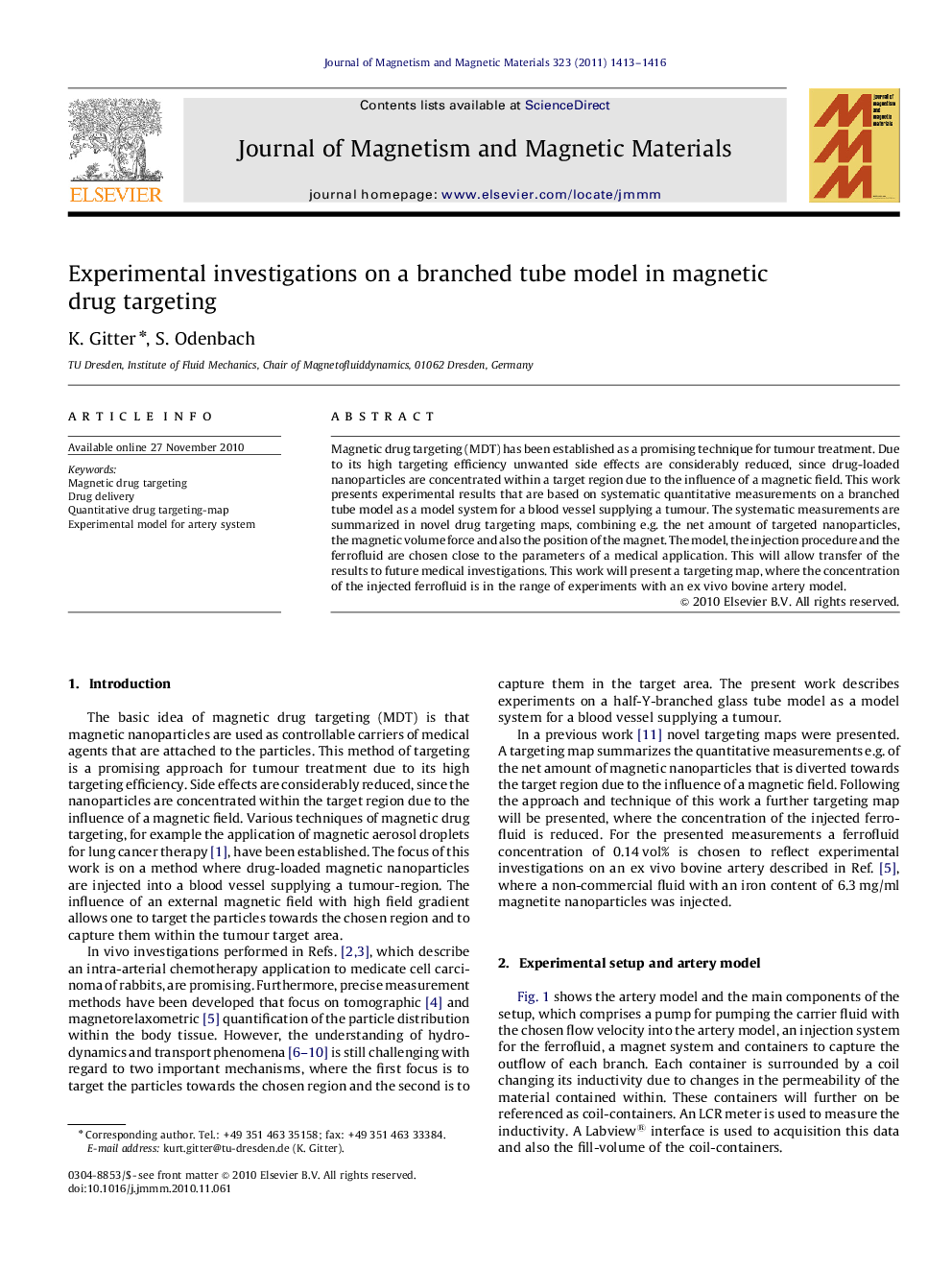| Article ID | Journal | Published Year | Pages | File Type |
|---|---|---|---|---|
| 1800710 | Journal of Magnetism and Magnetic Materials | 2011 | 4 Pages |
Magnetic drug targeting (MDT) has been established as a promising technique for tumour treatment. Due to its high targeting efficiency unwanted side effects are considerably reduced, since drug-loaded nanoparticles are concentrated within a target region due to the influence of a magnetic field. This work presents experimental results that are based on systematic quantitative measurements on a branched tube model as a model system for a blood vessel supplying a tumour. The systematic measurements are summarized in novel drug targeting maps, combining e.g. the net amount of targeted nanoparticles, the magnetic volume force and also the position of the magnet. The model, the injection procedure and the ferrofluid are chosen close to the parameters of a medical application. This will allow transfer of the results to future medical investigations. This work will present a targeting map, where the concentration of the injected ferrofluid is in the range of experiments with an ex vivo bovine artery model.
Research Highlights► Targeting maps combine quantitative data, magnetic volume forces and magnet position. ► Here, upto 97% of injected particles were targeted towards the tumour region. ► A low concentration of injected ferrofluid does not show the danger of accretion. ► Here, the targeting is dependent on the magnetic volume force in the branch-point.
